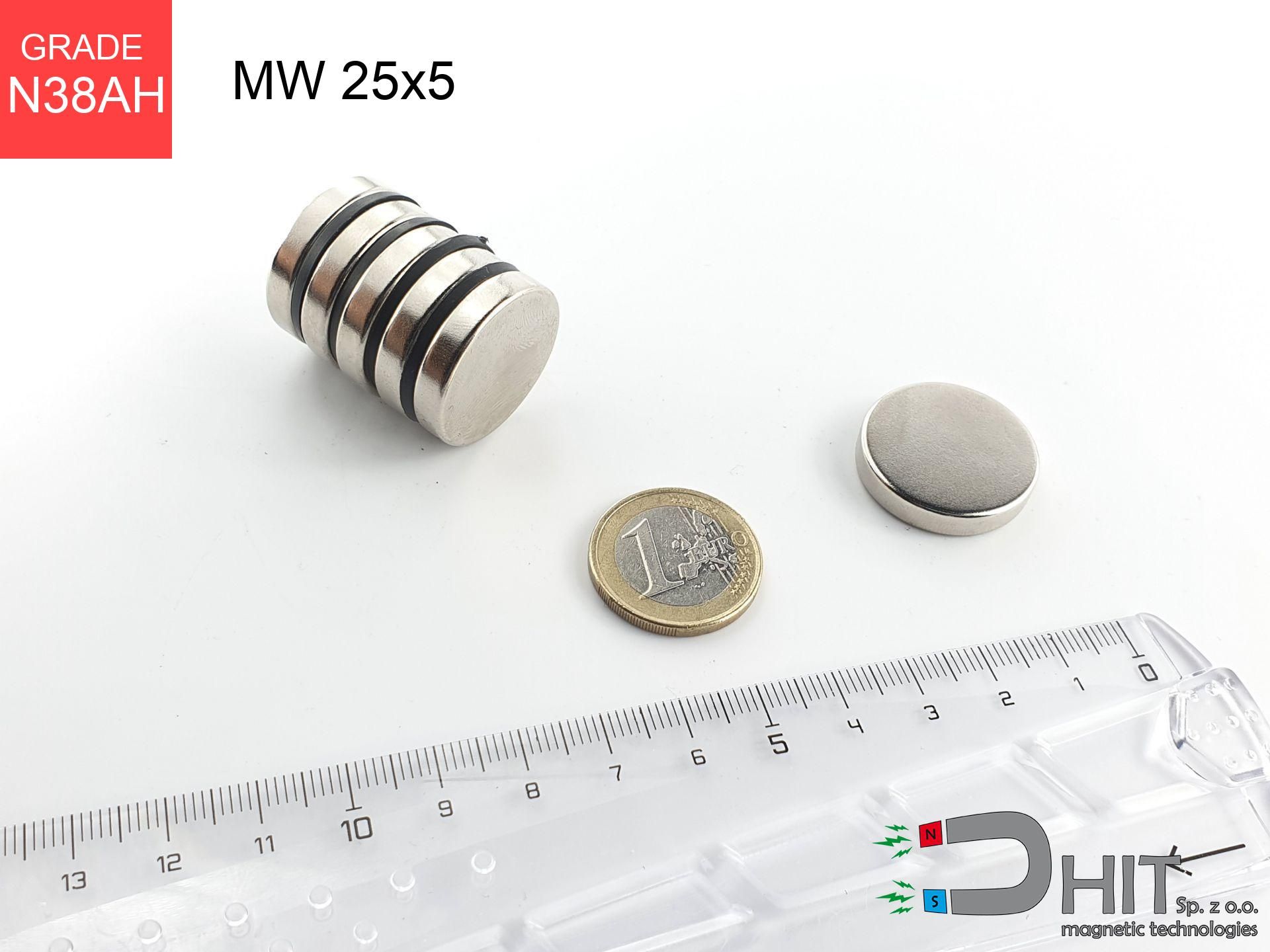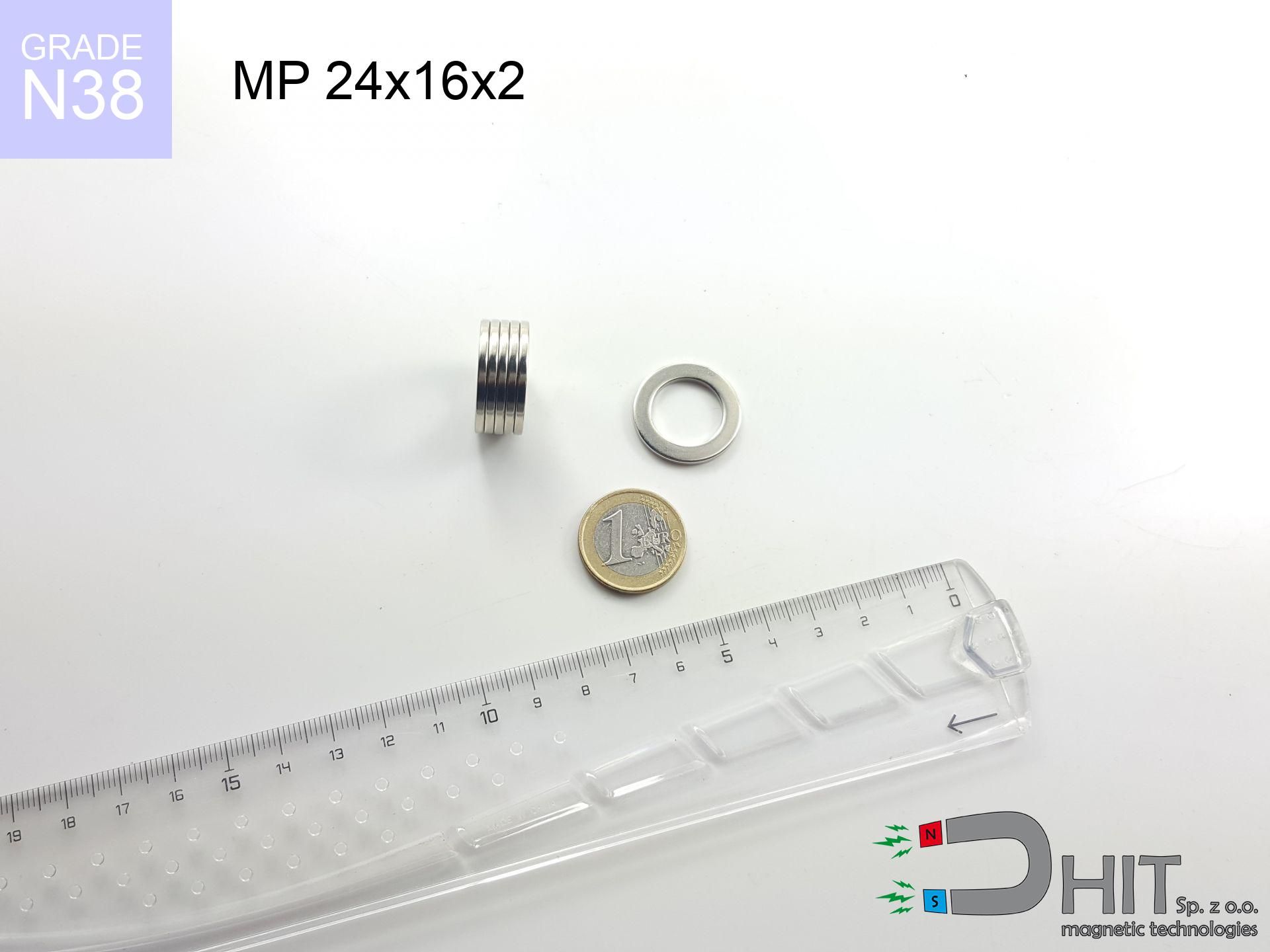SM 32x150 [2xM8] / N42 - magnetic separator
magnetic separator
Catalog no 130297
GTIN/EAN: 5906301812906
Diameter Ø
32 mm [±1 mm]
Height
150 mm [±1 mm]
Weight
804 g
Magnetic Flux
~ 8 000 Gauss [±5%]
455.10 ZŁ with VAT / pcs + price for transport
370.00 ZŁ net + 23% VAT / pcs
bulk discounts:
Need more?
Call us
+48 888 99 98 98
or let us know through
inquiry form
through our site.
Lifting power and form of magnets can be analyzed on our
online calculation tool.
Order by 14:00 and we’ll ship today!
Technical - SM 32x150 [2xM8] / N42 - magnetic separator
Specification / characteristics - SM 32x150 [2xM8] / N42 - magnetic separator
| properties | values |
|---|---|
| Cat. no. | 130297 |
| GTIN/EAN | 5906301812906 |
| Production/Distribution | Dhit sp. z o.o. |
| Country of origin | Poland / China / Germany |
| Customs code | 85059029 |
| Diameter Ø | 32 mm [±1 mm] |
| Height | 150 mm [±1 mm] |
| Weight | 804 g |
| Material Type | Stainless steel AISI 304 / A2 |
| Magnetic Flux | ~ 8 000 Gauss [±5%] |
| Size/Mount Quantity | 2xM8 |
| Polarity | circumferential - 5 poles |
| Casing Tube Thickness | 1 mm |
| Manufacturing Tolerance | ±1 mm |
Magnetic properties of material N42
| properties | values | units |
|---|---|---|
| remenance Br [min. - max.] ? | 12.9-13.2 | kGs |
| remenance Br [min. - max.] ? | 1290-1320 | mT |
| coercivity bHc ? | 10.8-12.0 | kOe |
| coercivity bHc ? | 860-955 | kA/m |
| actual internal force iHc | ≥ 12 | kOe |
| actual internal force iHc | ≥ 955 | kA/m |
| energy density [min. - max.] ? | 40-42 | BH max MGOe |
| energy density [min. - max.] ? | 318-334 | BH max KJ/m |
| max. temperature ? | ≤ 80 | °C |
Physical properties of sintered neodymium magnets Nd2Fe14B at 20°C
| properties | values | units |
|---|---|---|
| Vickers hardness | ≥550 | Hv |
| Density | ≥7.4 | g/cm3 |
| Curie Temperature TC | 312 - 380 | °C |
| Curie Temperature TF | 593 - 716 | °F |
| Specific resistance | 150 | μΩ⋅cm |
| Bending strength | 250 | MPa |
| Compressive strength | 1000~1100 | MPa |
| Thermal expansion parallel (∥) to orientation (M) | (3-4) x 10-6 | °C-1 |
| Thermal expansion perpendicular (⊥) to orientation (M) | -(1-3) x 10-6 | °C-1 |
| Young's modulus | 1.7 x 104 | kg/mm² |
Table 1: Rod construction
SM 32x150 [2xM8] / N42
| Parameter | Value | Description / Unit |
|---|---|---|
| Diameter (Ø) | 32 | mm |
| Total length | 150 | mm (L) |
| Active length | 114 | mm |
| Section count | 4 | modules |
| Dead zone | 36 | mm (2x 18mm starter) |
| Weight (est.) | ~917 | g |
| Active area | 115 | cm² (Area) |
| Housing material | AISI 304 | 1.4301 (Inox) |
| Surface finish | Ra < 0.8 µm | Polished |
| Temp. class | 80°C | Standard (N) |
| Force loss (at max °C) | -12.8% | Reversible loss (physics) |
| Force (calculated) | 26.2 | kg (theor.) |
| Induction (surface) | ~8 000 | Gauss (Max) |
Chart 2: Field profile (4 sections)
Chart 3: Temperature performance
Elemental analysis
| iron (Fe) | 64% – 68% |
| neodymium (Nd) | 29% – 32% |
| boron (B) | 1.1% – 1.2% |
| dysprosium (Dy) | 0.5% – 2.0% |
| coating (Ni-Cu-Ni) | < 0.05% |
Environmental data
| recyclability (EoL) | 100% |
| recycled raw materials | ~10% (pre-cons) |
| carbon footprint | low / zredukowany |
| waste code (EWC) | 16 02 16 |
Other products
Pros as well as cons of Nd2Fe14B magnets.
Pros
- They have unchanged lifting capacity, and over nearly 10 years their attraction force decreases symbolically – ~1% (in testing),
- They have excellent resistance to weakening of magnetic properties due to external fields,
- By using a smooth coating of gold, the element gains an elegant look,
- Neodymium magnets deliver maximum magnetic induction on a small area, which ensures high operational effectiveness,
- Neodymium magnets are characterized by very high magnetic induction on the magnet surface and can function (depending on the shape) even at a temperature of 230°C or more...
- Considering the ability of free shaping and adaptation to specialized needs, neodymium magnets can be created in a wide range of forms and dimensions, which makes them more universal,
- Key role in innovative solutions – they are utilized in data components, electromotive mechanisms, advanced medical instruments, and complex engineering applications.
- Compactness – despite small sizes they generate large force, making them ideal for precision applications
Weaknesses
- Brittleness is one of their disadvantages. Upon strong impact they can break. We recommend keeping them in a special holder, which not only protects them against impacts but also increases their durability
- Neodymium magnets lose strength when exposed to high temperatures. After reaching 80°C, many of them experience permanent weakening of strength (a factor is the shape and dimensions of the magnet). We offer magnets specially adapted to work at temperatures up to 230°C marked [AH], which are extremely resistant to heat
- Magnets exposed to a humid environment can rust. Therefore when using outdoors, we advise using water-impermeable magnets made of rubber, plastic or other material protecting against moisture
- Due to limitations in producing nuts and complex shapes in magnets, we propose using a housing - magnetic mechanism.
- Health risk to health – tiny shards of magnets pose a threat, in case of ingestion, which gains importance in the aspect of protecting the youngest. It is also worth noting that tiny parts of these magnets are able to complicate diagnosis medical after entering the body.
- Due to complex production process, their price exceeds standard values,
Pull force analysis
Optimal lifting capacity of a neodymium magnet – what it depends on?
- using a base made of low-carbon steel, serving as a magnetic yoke
- with a cross-section minimum 10 mm
- characterized by lack of roughness
- with direct contact (no impurities)
- during pulling in a direction vertical to the plane
- at ambient temperature approx. 20 degrees Celsius
Practical aspects of lifting capacity – factors
- Distance (betwixt the magnet and the metal), because even a very small clearance (e.g. 0.5 mm) leads to a decrease in lifting capacity by up to 50% (this also applies to varnish, rust or debris).
- Loading method – declared lifting capacity refers to pulling vertically. When slipping, the magnet holds significantly lower power (often approx. 20-30% of maximum force).
- Base massiveness – insufficiently thick plate causes magnetic saturation, causing part of the power to be lost into the air.
- Steel grade – the best choice is pure iron steel. Hardened steels may generate lower lifting capacity.
- Surface condition – ground elements ensure maximum contact, which improves force. Uneven metal reduce efficiency.
- Operating temperature – NdFeB sinters have a sensitivity to temperature. At higher temperatures they lose power, and in frost they can be stronger (up to a certain limit).
Lifting capacity testing was performed on plates with a smooth surface of suitable thickness, under perpendicular forces, whereas under parallel forces the lifting capacity is smaller. Moreover, even a small distance between the magnet and the plate decreases the lifting capacity.
H&S for magnets
Caution required
Before starting, read the rules. Sudden snapping can break the magnet or hurt your hand. Think ahead.
Pacemakers
Life threat: Neodymium magnets can turn off pacemakers and defibrillators. Stay away if you have electronic implants.
GPS and phone interference
Be aware: neodymium magnets produce a field that disrupts sensitive sensors. Maintain a separation from your mobile, device, and GPS.
Heat warning
Regular neodymium magnets (grade N) lose power when the temperature surpasses 80°C. This process is irreversible.
Allergic reactions
Nickel alert: The Ni-Cu-Ni coating contains nickel. If redness occurs, cease handling magnets and wear gloves.
Crushing risk
Mind your fingers. Two large magnets will snap together instantly with a force of several hundred kilograms, destroying everything in their path. Exercise extreme caution!
This is not a toy
NdFeB magnets are not suitable for play. Swallowing several magnets can lead to them pinching intestinal walls, which constitutes a direct threat to life and necessitates immediate surgery.
Electronic devices
Intense magnetic fields can erase data on credit cards, HDDs, and storage devices. Keep a distance of at least 10 cm.
Combustion hazard
Machining of neodymium magnets poses a fire hazard. Neodymium dust oxidizes rapidly with oxygen and is difficult to extinguish.
Fragile material
Watch out for shards. Magnets can explode upon uncontrolled impact, launching sharp fragments into the air. Wear goggles.

![Separation magnetic rod SM 32x150 [2xM8] / N42 Separation magnetic rod SM 32x150 [2xM8] / N42](https://cdn3.dhit.pl/graphics/banners/magnet.webp)
![SM 32x150 [2xM8] / N42 - magnetic separator](https://cdn3.dhit.pl/graphics/products/sm-32x150-2xm8-xus.jpg)





